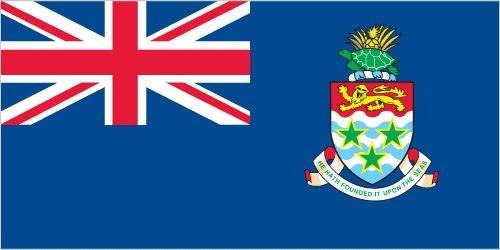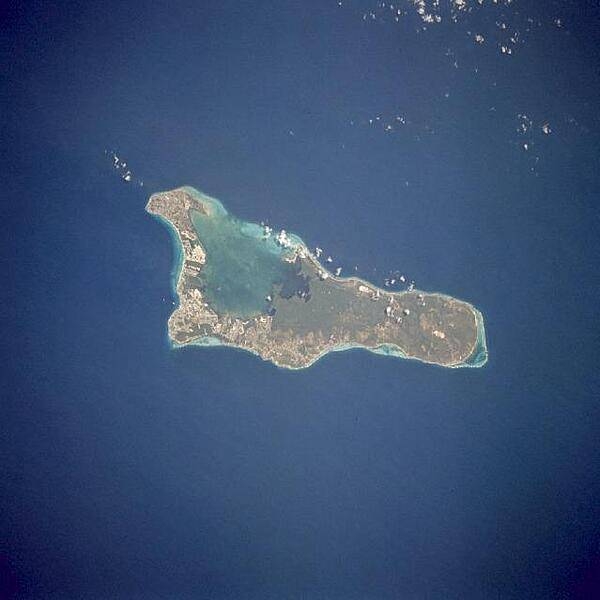118 Cayman Islands (UK)

A blue field with the flag of the UK in the upper hoist-side quadrant and the Caymanian coat of arms centered on the outer half of the flag. The coat of arms includes a crest with a pineapple, representing the connection with Jamaica, and a turtle, representing Cayman’s seafaring tradition, above a shield bearing a golden lion, symbolizing Great Britain, below which are three green stars (representing the three islands) surmounting white and blue wavy lines representing the sea. A scroll below the shield bears the motto HE HATH FOUNDED IT UPON THE SEAS.
Flag courtesy of the CIA World Factbook

Map courtesy of the CIA World Factbook

Grand Cayman is a low-lying, limestone island located on top of a submarine ridge. The city of George Town, the capital and chief port of the Cayman Islands, may be seen at the southwest end of the island. Grand Cayman’s 7-mile beach is on the western side of the island. With exotic coral reefs off its shores, Grand Cayman is a mecca for divers.
Photo courtesy of the CIA World Factbook
Last updated on October 21, 2025
Government
According to Britannica, the constitution, which came into effect in 2009 and was amended in 2020, provides for internal autonomy under a governor, a cabinet, and a Parliament. The British monarch, represented by the governor, is head of state. The head of government is the premier, appointed by the governor to serve no more than two consecutive four-year terms. The governor is responsible for foreign affairs, defense, internal security, and the police. A deputy governor, who must be Caymanian, assists the governor and heads the civil service. The governor leads the cabinet, which includes the premier, six other members appointed by the governor, and two nonvoting members: the deputy governor and the attorney general. The Parliament consists of 15 elected members and 3 nonelected members from the cabinet.
The Cayman Islands did not have formal political parties for many years; instead, so-called “national teams” made up of nominally independent politicians ran in elections. The Progressive Democratic Party (formed in 1991) was the first political organization to take shape since the 1960s; in 1996 two other groups, the Democratic Alliance and Team Cayman, emerged. Two formal parties, the United Democratic Party and the People’s Progressive Movement, were established in 2001 and 2002, respectively.
There are three levels of courts in the Cayman Islands. Subordinate courts have civil and criminal jurisdiction. Appeals from the subordinate courts go to the Grand Court, which also hears the more serious cases within the criminal, family, common law and civil jurisdictions. Legal actions taken as a result of international offshore banking and financial activities in the Caymans usually are brought before the Grand Court; these involve complex issues and substantial assets. The Court of Appeal hears appeals from the Grand Court; it is composed of a president and at least two judges of appeal. The chief justice of the Grand Court is responsible for all matters concerning the judiciary, serving as a liaison to the other branches of government and as a consultant to the head of the Court of Appeal. Caymanian magistrates and judges are appointed by the governor on the advice of various other officials, depending on the court on which the justices will serve. A Judicial and Legal Services Commission advises the governor on judicial appointments and disciplinary control over the members of the judiciary. The commission has eight members, including the president of the Court of Appeal and seven others who are appointed by the governor in consultation with other government members and legal professional organizations.
Civil Aviation Authority of the Cayman Islands (CAACI)
The role of the Civil Aviation Authority of the Cayman Islands (CAACI) is primarily to function as the regulatory organization responsible for safety oversight and economic regulation of the aviation industry throughout the territory and to ensure that the Cayman Islands aviation industry conforms to the standards and recommended practices of the ICAO. The guiding legislation to ensure compliance with the ICAO standards and recommended practices is the Air Navigation (Overseas Territory) Order.
Airspace
SkyVector – Google Maps – ADS-B Exchange
ICAO countries publish an Aeronautical Information Publication (AIP). This document is divided into three parts: General (GEN), En Route (ENR) and Aerodromes (AD). ENR 1.4 details the types of airspace classes they chose to adopt from classes A through G.
Drone Regulations
ASSI – Legal requirements for the operation of small unmanned aircraft in the UK Overseas Territories
The Air Navigation (Overseas Territories) (Amendment) Order 2024
Advanced Air Mobility (AAM) Regulations & Policies
None found by the author.
However, should you, the reader, happen to stumble across something to the contrary, please email the author at FISHE5CA@erau.edu and you may be mentioned in the ACKNOWLEDGEMENTS section of this book by way of thanks for contributing to this free eBook!
Advanced Air Mobility (AAM) News
None found by the author.
However, should you, the reader, happen to stumble across something to the contrary, please email the author at FISHE5CA@erau.edu and you may be mentioned in the ACKNOWLEDGEMENTS section of this book by way of thanks for contributing to this free eBook!
Short Essay Questions
Scenario-Based Question
You have been hired by a Drone Startup Company. Your boss has immediately assigned this job to you.
They need you to prepare a one-page memo detailing the legalities of using a drone to film Skull cave on Cayman Brac.
They need you to mention any national laws and local ordinances.
They specifically want to know what airspace (insert pictures) you will be operating in and whether or not you need an airspace authorization.
Does it matter whether or not you are a citizen of the country?
Lastly, there is a bonus for you if, as you scroll through this chapter, you find any typos or broken links!
Short Essay Questions
- What are the drone categories?
- How is registration addressed?
- How is remote ID addressed?
- What are the model aircraft rules?
- What are the commercial drone rules?
- Are there waivers or exemptions to the rules? If so, for what?
- Would you share a link to an interactive airspace map?
- How is BVLOS addressed?
- How can you fly drones at night?
- How can you fly drones over people?
- Where do you find drone NOTAMs?
- What are the rules for drone maintenance?
- What are the rules for an SMS program?
- What are some unique rules not mentioned above?
- What are the C-UAS rules?
- What are the AAM rules?

